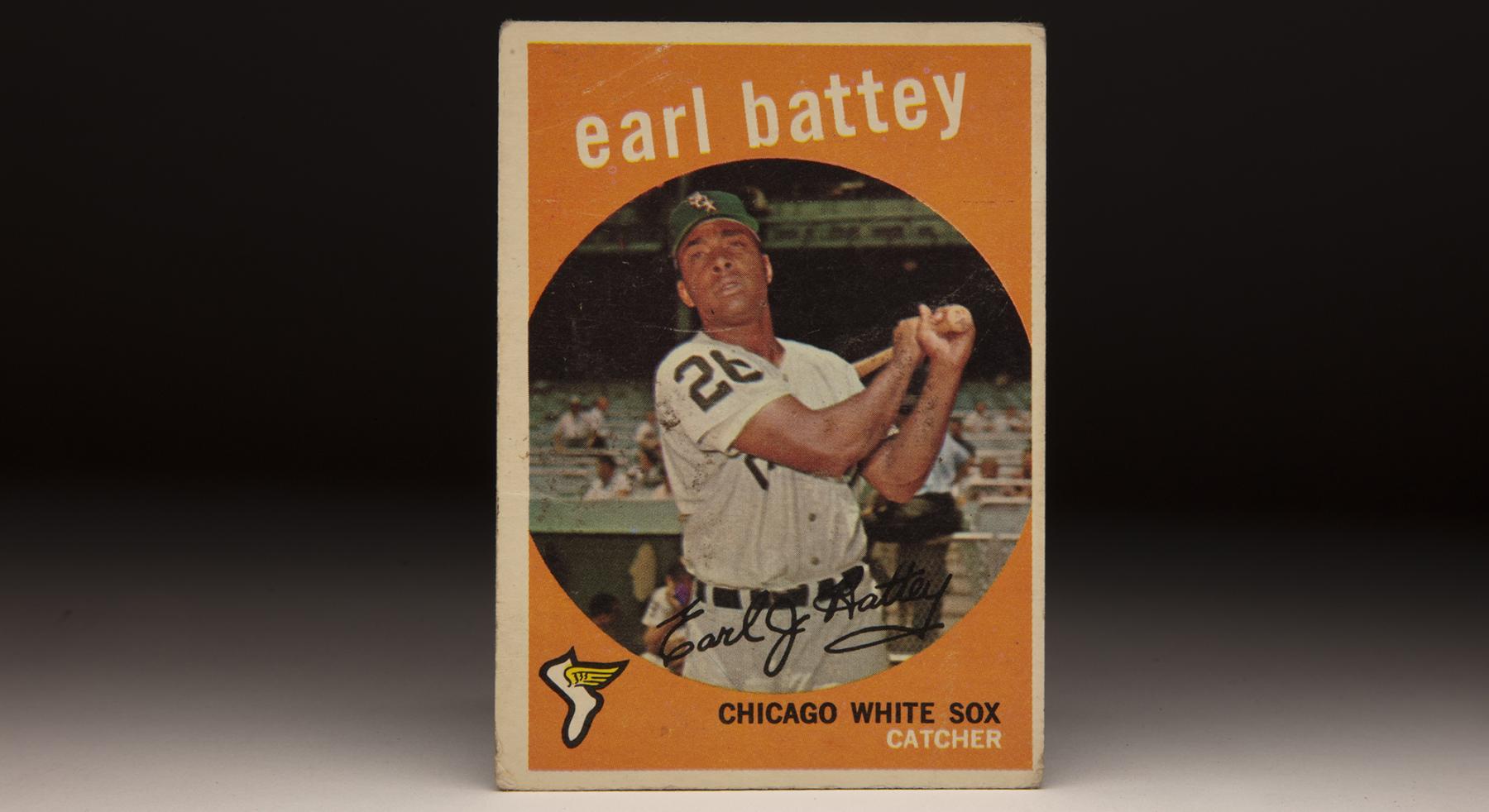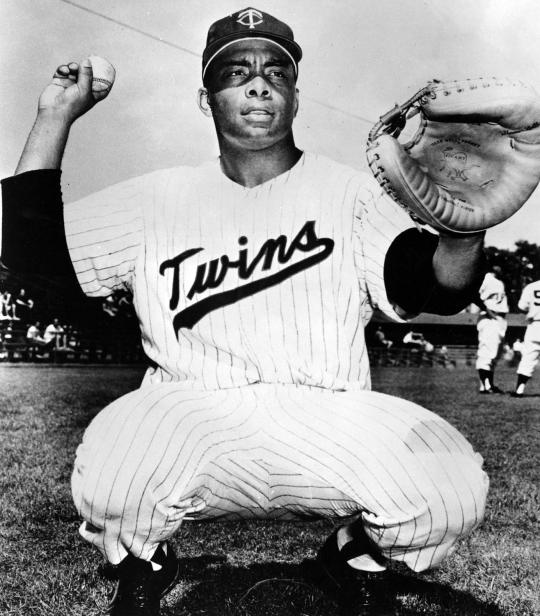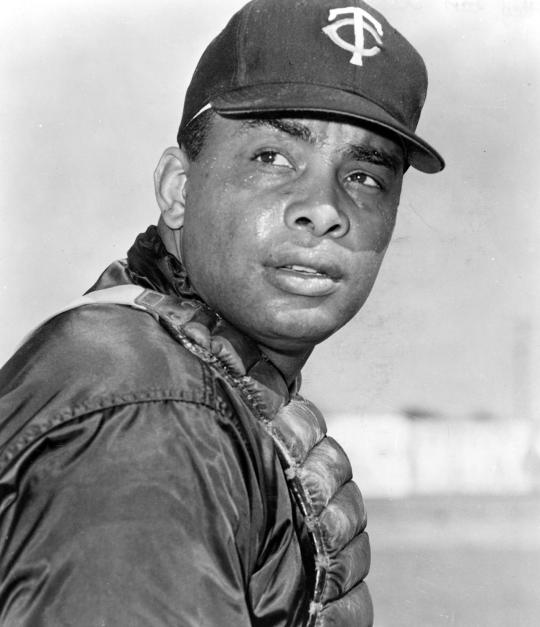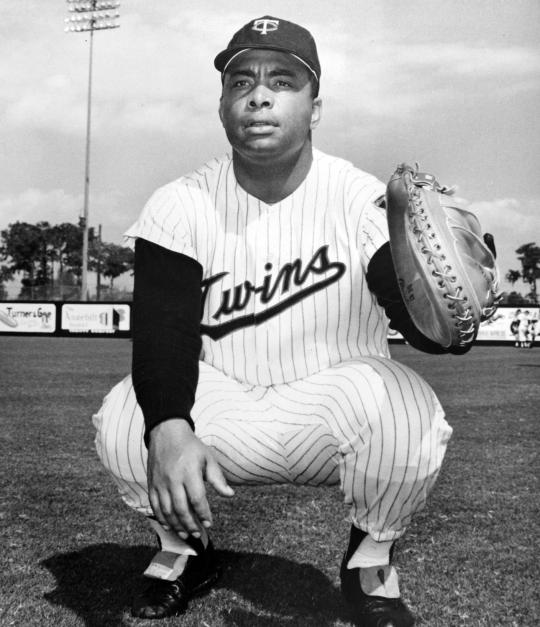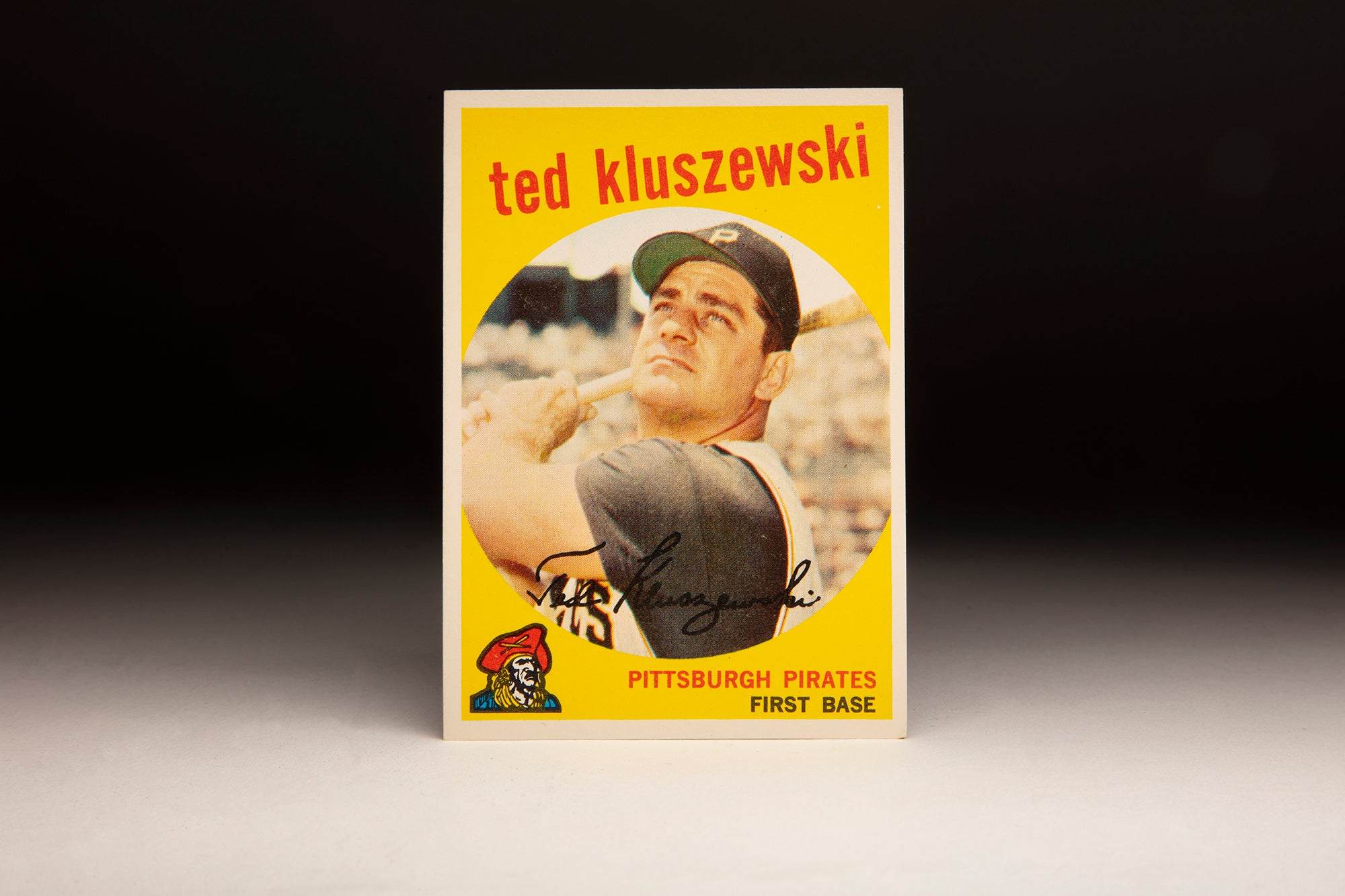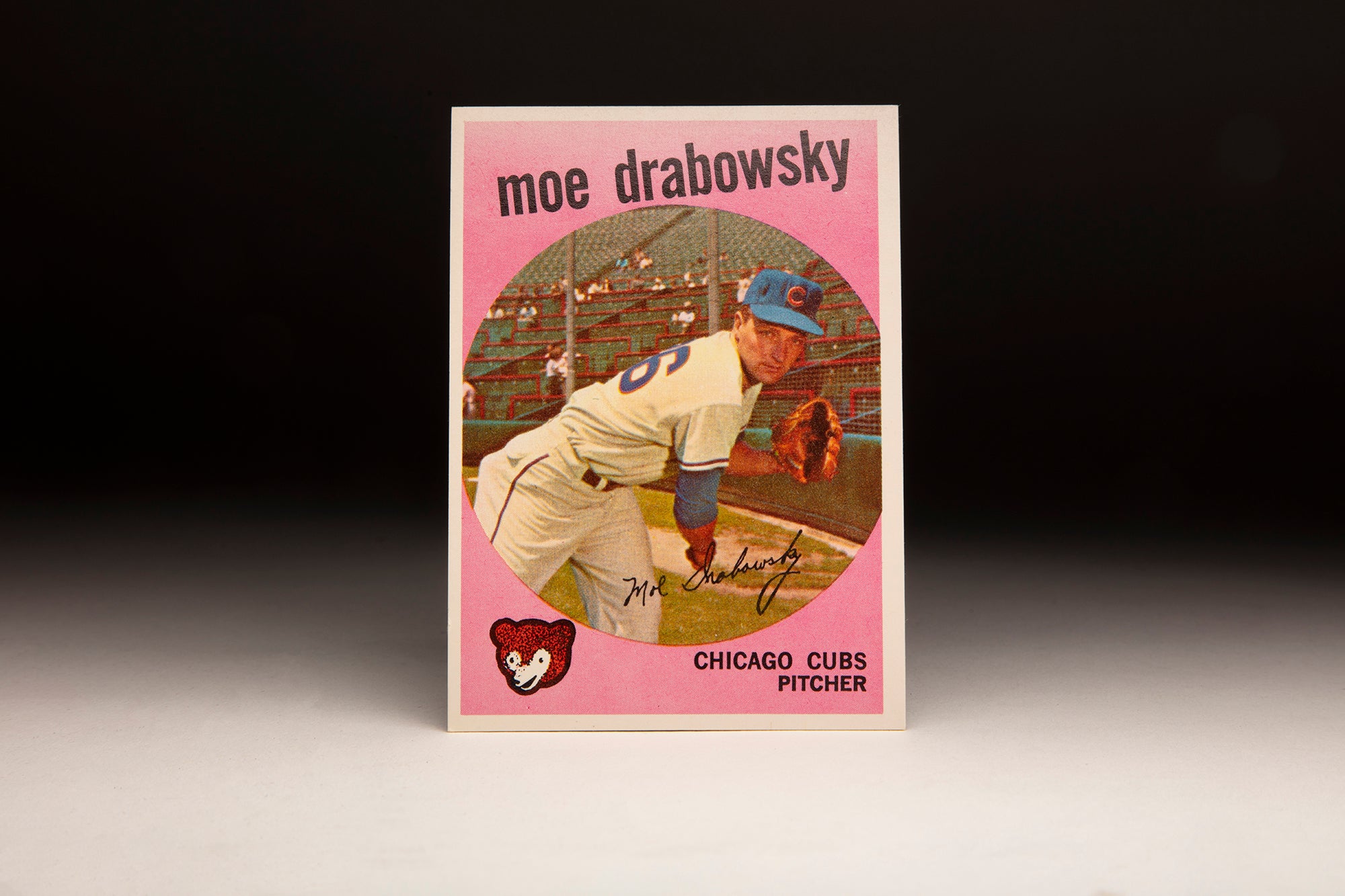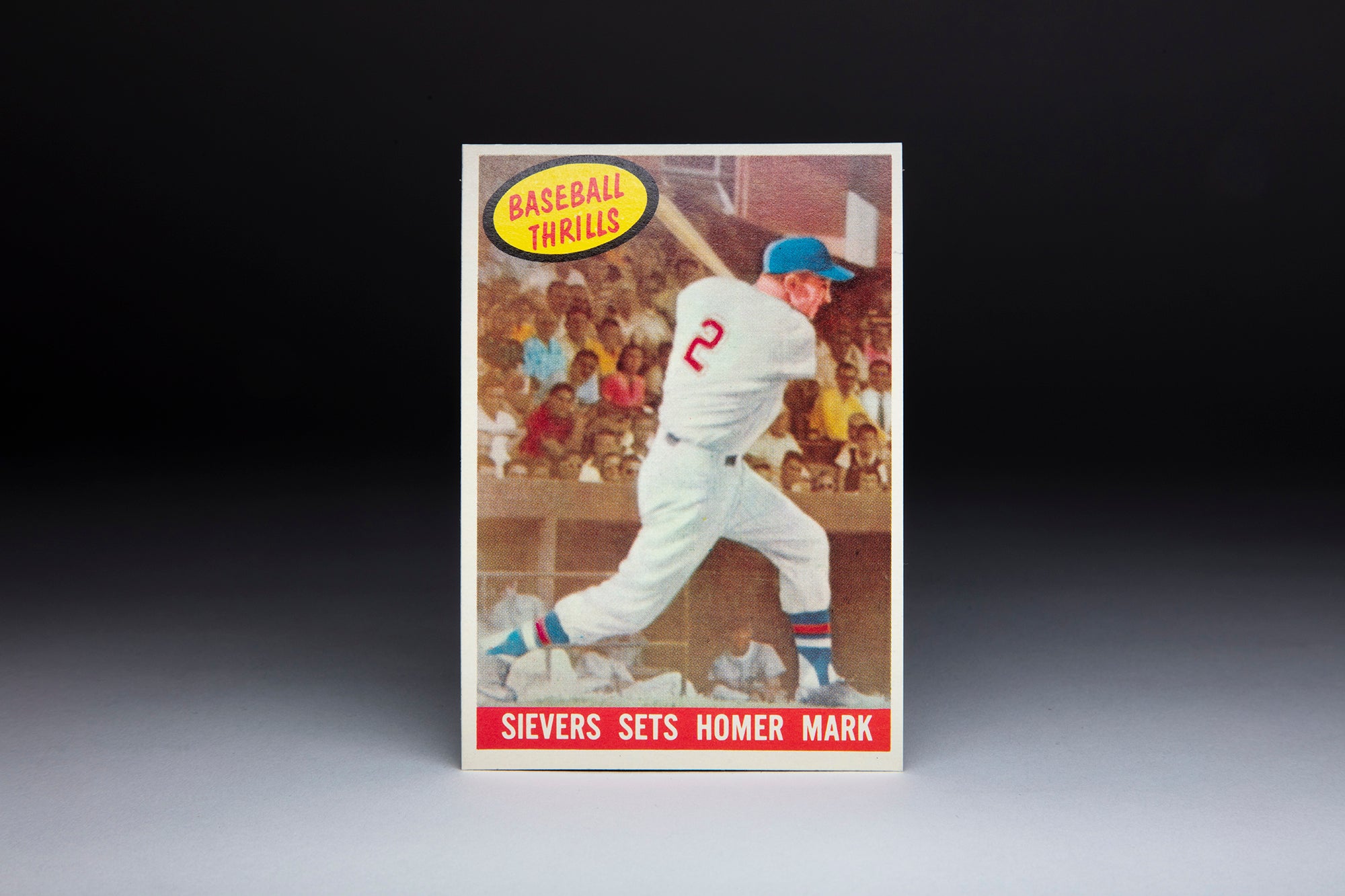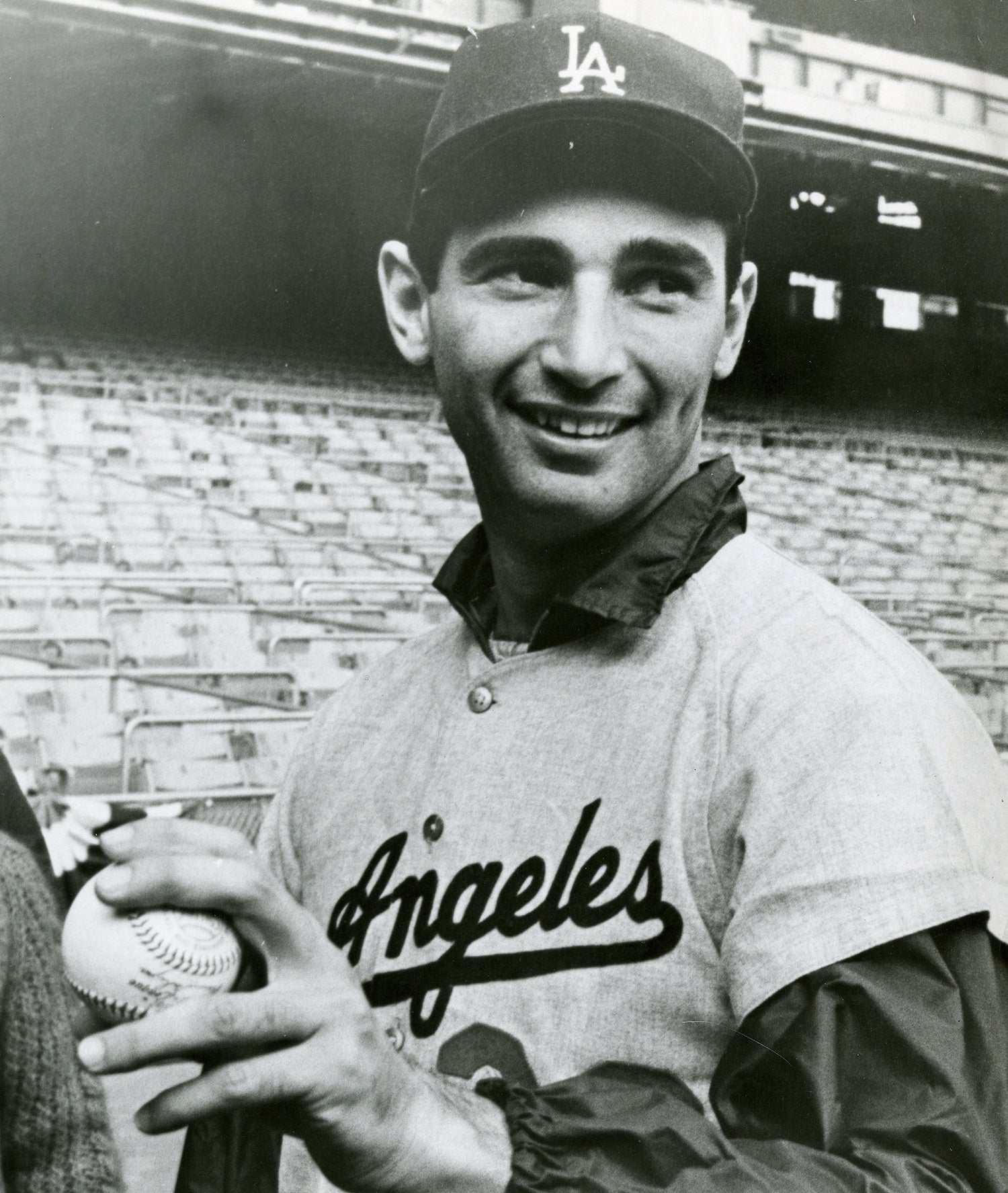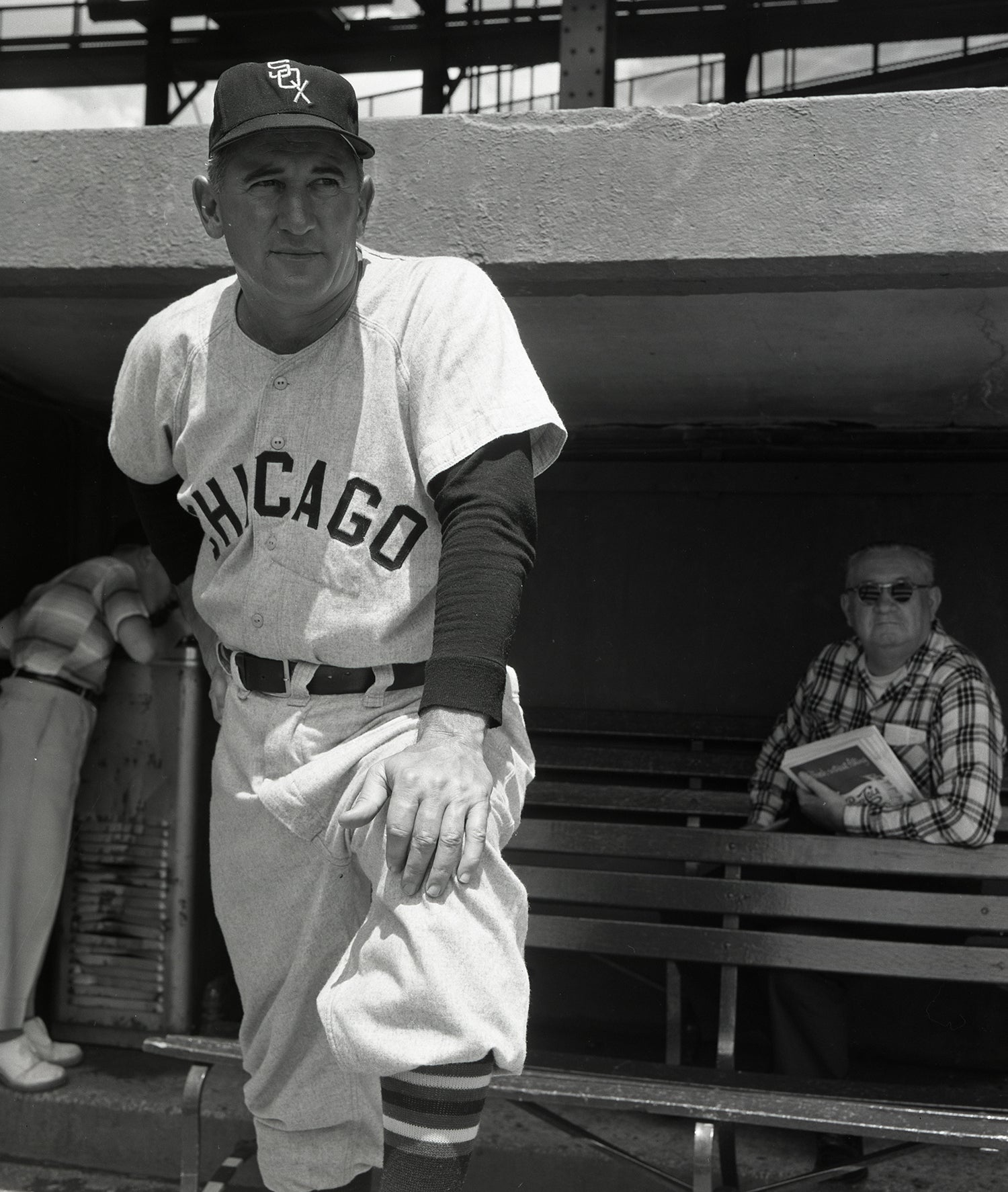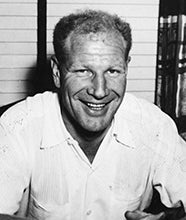- Home
- Our Stories
- #CardCorner: 1959 Topps Earl Battey
#CardCorner: 1959 Topps Earl Battey
When Earl Battey hit 26 home runs for the Minnesota Twins in 1963, only five other American League catchers had ever reached that mark in one season.
For Battey, it was the offensive high point in a career that saw him become one of the most decorated backstops of his era.
Born Jan. 5, 1935, Battey – one of 11 children – was raised in the Watts neighborhood of Los Angeles. He signed as an amateur free agent with the White Sox following high school, receiving $3,999 – one dollar short of a figure that would have forced Battey to stay in the majors as a bonus baby.
White Sox scout Hollis “Sloppy” Thurston, who won 20 games with Chicago in 1924, signed Battey to the contract.
Hall of Fame Membership
There is no simpler, and more essential, way to demonstrate your support than to sign on as a Museum Member.
“If Battey doesn’t make good,” White Sox manager Al López told the Chicago Tribune in Spring Training in 1957, “Thurston will say I don’t know how to manage.”
Battey struggled in his first minor league stop in 1953, hitting just .158 in 26 games with Class A Colorado Springs of the Western League. But Battey’s strong throwing arm and athletic build made him an asset behind the plate – and in 1954 he established himself as a bona fide prospect by hitting .292 for Class B Waterloo of the Three-I League, where he was named to the league’s first team All-Star squad and the loop’s top rookie.
If Battey “isn’t a big league star of the future,” White Sox general manager Frank Lane told the Associated Press when he optioned Battey to Triple-A Charleston in 1955, “then we might as well fire all our scouts and start over again.”
Battey hit .269 in 125 games for Charleston in 1955 despite being struck on the jaw in July during a game against Louisville. The White Sox called him up to the majors in September, and he recorded two hits in seven at-bats over five games.
Battey hoped get regular playing time with the White Sox 1956, but perennial All-Star Sherm Lollar was blocking his path. Battey appeared in one game for Chicago on April 22 when the Kansas City Athletics scored 13 runs in the second inning, prompting White Sox manager Marty Marion to pull Lollar from the game to rest him. Battey recorded the only hit the A’s Art Ditmar would surrender that day in Chicago’s 15-1 loss.
But after appearing in just three more games, the White Sox optioned Battey to Triple-A Toronto on May 16. It would become a lost season, as Battey injured his right knee on a play at the plate in his second game with Toronto and hit just .178 in 36 games for the Maple Leafs.
Once fully recovered, Battey traveled to Venezuela to play winter ball and hit .331. And in Spring Training of 1957, Battey earned the job as the White Sox’s backup catcher. But Battey failed to hit in his reserve role and continued to struggle when Lollar broke his wrist in June.
Lollar returned to the field in August, and soon after the White Sox optioned Battey – who was hitting .163 in 46 games – to Los Angeles of the Pacific Coast League. He hit .252 with nine homers in 42 games for the Angels before returning to the White Sox late in the 1957 season.
It would be his last season in the minor leagues.
Battey again made the Opening Day roster in 1958 and once again was Lollar’s backup. In 68 games, Battey hit .226 as the White Sox finished second in the American League to the Yankees for the second straight season.
Then in 1959, Chicago finally broke through and won the pennant behind the spectacular play of future Hall of Famers Luis Aparicio and Nellie Fox. Battey, however, fell to No. 3 on the catching depth chart and appeared in just 26 games while hitting .219. He did not play in the World Series as Chicago lost to the Dodgers in six games.
At 25 years of age, Battey entered the 1960 season as a prized prospect who had yet to prove his worth. The White Sox decided to cash in on his value, sending Battey, Don Mincher and $150,000 to the Senators in exchange for slugger Roy Sievers two weeks before Opening Day – consummating a trade that was rumored for months.
It turned the tide of Battey’s career.
“Battey is an excellent catcher,” White Sox owner Bill Veeck told the Associated Press, “but he didn’t figure to play too much.”
But in Washington, Battey was immediately penciled in as the starter behind the plate. He drove in four runs on Opening Day for the Senators en route to a .270 batting average, 15 homers and 60 RBI in 137 games. Defensively, Battey led all American League catchers in assists (65), caught stealings (41) and caught stealing percentage (58.6) while winning a Gold Glove Award and finishing eighth in the AL Most Valuable Player voting.
Battey even overcame a beaning from Red Sox pitcher Tom Sturdivant on April 30 – and when he returned after missing one game he became one of the first players to wear a helmet with an ear flap.
Battey was even better in 1961 after the Senators franchise moved to Minnesota. In 133 games, Battey hit .302 with 17 homers, 70 runs scored and 55 RBI while earning another Gold Glove Award. Then in 1962, Battey was named as the starter in both All-Star Games en route to his third straight Gold Glove Award and a .280 batting average in 148 games.
In 1963, Battey was part of a Twins power explosion that produced 225 home runs. Battey’s 26 homers ranked fourth on the team behind Harmon Killebrew (45), Bob Allison (35) and Jimmie Hall (33) – and the Twins won 91 games, announcing themselves as a team to be reckoned with as the Yankees’ dynasty slowly aged.
Battey was again the starting catcher for the AL in the All-Star Game and finished seventh in the MVP voting.
“It’s an honor to be voted an All-Star by the players who compete against you,” Battey told the Minneapolis Star Tribune.
Battey and the Twins both had off years in 1964, as Minnesota’s victory total dropped to 79 and Battey hit just 12 home runs. Though he batted .272 in 131 games, Battey was not named to the All-Star team and failed to lead AL catchers in assists for the first time since becoming a regular in 1960.
He missed three games in May after hitting his head on a ballboy’s chair while catching a pop-up off the bat of Kansas City’s George Williams on May 10, but batted .310 from July 1 through the end of the season.
At the start of the 1965 season, Battey was 30 years old and had lost some of his power and speed. But his arm remained strong, and his ability as a field general was recognized throughout the league. The Twins pitching staff benefited from all this en route to the American League pennant, as Minnesota won 102 games behind 21 victories from Mudcat Grant and 18 more from Jim Kaat.
Battey hit .297 with a .375 on-base percentage, recording 60 RBI while striking out just 23 times in 457 plate appearances. Since the end of World War II, only eight other catchers have posted seasons with at least 450 plate appearances and 23-or-fewer strikeouts.
Battey and the Twins faced the Dodgers in the World Series, and Minnesota jumped out to a 2-games-to-none lead – with Battey singling home two runs in the third inning of Game 1, turning a 4-1 Minnesota lead into a 6-1 advantage in what became an 8-2 Twins win.
But in the seventh inning of Game 3 at Dodger Stadium, Battey bruised his neck and jaw while chasing a pop-up off the bat of Willie Davis near the Twins dugout. Battey was removed from the game, and doctors immediately packed his neck in ice to reduce the swelling.
“I’ll wait until tomorrow to make a final decision on whether to play Battey (in Game 4),” Twins manager Sam Mele told United Press International following Game 3. “He doesn’t feel too bad.”
But in the final four games of the World Series, Battey – who started every game – was just 1-14 (.071) at the plate. Dodgers runners were successful in nine of 14 stolen base attempts against Battey in the World Series, and Los Angeles – on the strength of a Sandy Koufax shutout in Game 7 – won the title.
Following the season, Battey finished 10th in the AL MVP race – his third Top 10 finish in six seasons. Only the Yankees’ Elston Howard had as many in the same timeframe.
The Twins fell to second place in 1966, with Battey hitting .255 with four homers and 34 RBI in 115 games. In 1967, Battey suffered through rib and thumb injuries while appearing in just 48 games.
The 1967 AL pennant race went down to the final day of the season, with Boston defeating Minnesota at Fenway Park to give the Red Sox a one-game lead over the Twins and the title. Battey did not appear in the game – and in the Twins clubhouse afterward he quietly announced his retirement.
“I’m all finished with baseball,” Battey told UPI. “This was my last season and this is my last ballgame. This season took too much out of me.
“What I remember most is the 1965 season, the World Series and all that. I guess that was the best thing that ever happened to me in baseball.”
Battey immediately began mentoring children in Dobbs Ferry, N.Y., and Battey worked with Consolidated Edison to provide tickets to Yankees game for young fans. Battey stayed active in the program for decades, with future major leaguers like Willie Randolph and Stan Jefferson having attended Yankees games via the tickets.
Battey later coached high school baseball in Ocala, Fla., where he was a school teacher. Over 13 big league seasons, Battey hit .270 with 969 hits, 104 home runs and 449 RBI.
A five-time All-Star and three-time Gold Glove Award winner, Battey passed away on Nov. 15, 2003, in Ocala.
“Earl Battey was one of the finest catchers I have ever seen,” teammate Harmon Killebrew said. “I don’t think we realized how great he was.”
Craig Muder is the director of communications for the National Baseball Hall of Fame and Museum

